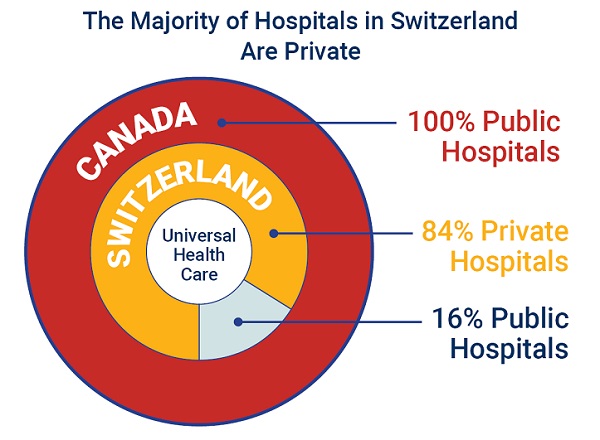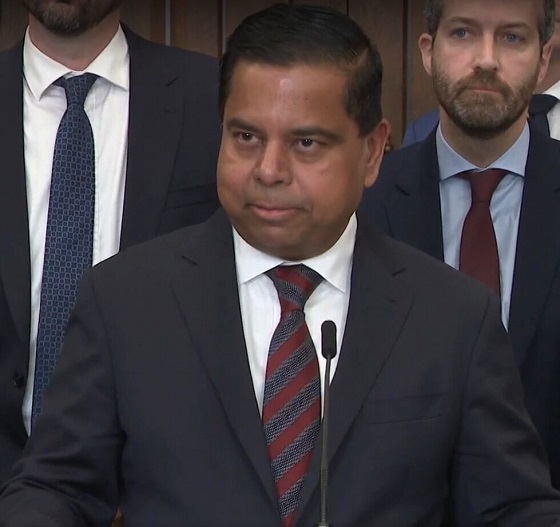Alberta
Albertans need clarity on prime minister’s incoherent energy policy

From the Fraser Institute
By Tegan Hill
The new government under Prime Minister Mark Carney recently delivered its throne speech, which set out the government’s priorities for the coming term. Unfortunately, on energy policy, Albertans are still waiting for clarity.
Prime Minister Carney’s position on energy policy has been confusing, to say the least. On the campaign trail, he promised to keep Trudeau’s arbitrary emissions cap for the oil and gas sector, and Bill C-69 (which opponents call the “no more pipelines act”). Then, two weeks ago, he said his government will “change things at the federal level that need to be changed in order for projects to move forward,” adding he may eventually scrap both the emissions cap and Bill C-69.
His recent cabinet appointments further muddied his government’s position. On one hand, he appointed Tim Hodgson as the new minister of Energy and Natural Resources. Hodgson has called energy “Canada’s superpower” and promised to support oil and pipelines, and fix the mistrust that’s been built up over the past decade between Alberta and Ottawa. His appointment gave hope to some that Carney may have a new approach to revitalize Canada’s oil and gas sector.
On the other hand, he appointed Julie Dabrusin as the new minister of Environment and Climate Change. Dabrusin was the parliamentary secretary to the two previous environment ministers (Jonathan Wilkinson and Steven Guilbeault) who opposed several pipeline developments and were instrumental in introducing the oil and gas emissions cap, among other measures designed to restrict traditional energy development.
To confuse matters further, Guilbeault, who remains in Carney’s cabinet albeit in a diminished role, dismissed the need for additional pipeline infrastructure less than 48 hours after Carney expressed conditional support for new pipelines.
The throne speech was an opportunity to finally provide clarity to Canadians—and specifically Albertans—about the future of Canada’s energy industry. During her first meeting with Prime Minister Carney, Premier Danielle Smith outlined Alberta’s demands, which include scrapping the emissions cap, Bill C-69 and Bill C-48, which bans most oil tankers loading or unloading anywhere on British Columbia’s north coast (Smith also wants Ottawa to support an oil pipeline to B.C.’s coast). But again, the throne speech provided no clarity on any of these items. Instead, it contained vague platitudes including promises to “identify and catalyse projects of national significance” and “enable Canada to become the world’s leading energy superpower in both clean and conventional energy.”
Until the Carney government provides a clear plan to address the roadblocks facing Canada’s energy industry, private investment will remain on the sidelines, or worse, flow to other countries. Put simply, time is up. Albertans—and Canadians—need clarity. No more flip flopping and no more platitudes.
Alberta
Oil prices are headed for a hard fall

This article supplied by Troy Media.
 By Rashid Husain Syed
By Rashid Husain Syed
Oil prices are dropping fast as the world pumps more than it needs – and that’s bad news for Canada
Oil prices are on the verge of a sharp and sustained decline. Despite short-term fluctuations and a range of analyst views, the underlying market fundamentals—surging global supply and flat demand—point to one outcome: crude is going down.
Falling oil prices have ripple effects across Canada, impacting everything from jobs and government revenues to household fuel costs and weighing on the national economy as a whole. And because Alberta’s economy plays such an outsized role in Canada’s overall economic health, those effects
extend far beyond its borders.
A new report from U.S. law firm Haynes Boone, based on its Spring 2025 Energy Bank Price Deck Survey, publicly released last week, shows a notable shift in sentiment. The 28 banks surveyed, the largest number to date, now expect West Texas Intermediate (WTI) crude to average just US$58.30 per barrel in 2025, a 5.8 per cent drop from the forecast issued only months earlier, according to the survey findings.
This decline isn’t simply a reaction to April’s US$10-per-barrel slump. The more significant factor is the rising output from OPEC+, a coalition of oil-producing nations led by Saudi Arabia and Russia, combined with pro-production signals from the Trump administration, including expected deregulation and expanded domestic drilling support. These supply increases are hitting the market at a time when global demand forecasts remain largely unchanged. That imbalance is creating persistent downward pressure on prices, and the banks are responding accordingly.
Forecasts from major institutions reinforce the bearish outlook. HSBC, in a projection cited by Reuters, has walked back its earlier estimate of
US$65 per barrel, now warning of a larger-than-expected market surplus following the summer driving season. The bank expects regular OPEC+ production hikes starting in October, with 2.2 million barrels per day in voluntary production cuts—reductions made to support prices—fully unwound by the end of 2025.
ING analysts Warren Patterson and Ewa Manthey, quoted in Oilprice.com, expect this to happen even faster. “This would mean that the full 2.2 million bpd of supply will be brought back by the end of the third quarter of this year, 12 months ahead of schedule,” they said. “This is the key assumption behind our price forecast for ICE Brent to average US$59/barrel in the fourth quarter.” ICE Brent refers to Brent crude oil futures traded on the Intercontinental Exchange, a major global benchmark for pricing oil.
Only Goldman Sachs, according to Bloomberg, offers a more cautious view, suggesting OPEC+ may slow its pace after a final August hike. But even this position concedes that rising production is putting pressure on prices. The consensus among forecasters is growing: the global oil market is heading toward oversupply, and there’s little evidence that demand will rise to meet it any time soon.
What makes this moment more critical is the broader economic context. Central banks around the world, including the Bank of Canada, are cautiously trying to manage inflation while avoiding recession. Energy prices play a major role in both. A prolonged period of low oil prices could relieve some inflationary pressure, but it could also drag down national growth, especially in economies with strong ties to energy exports, like Canada’s.
The direction is clear: the world is producing more oil than it can consume, and there’s little on the horizon to absorb the surplus. Unless an unexpected geopolitical event disrupts global markets, crude prices are heading lower and may stay there longer than many in the industry are prepared for. Traders are already adjusting. Producers banking on a rebound may be in for a costly surprise.
For Canadian consumers, this could mean short-term relief at the pump. But for oil-dependent regions, it raises the risk of another round of fiscal restraint, job losses and broader economic strain, especially if weak oil prices persist into 2026 and beyond.
Toronto-based Rashid Husain Syed is a highly regarded analyst specializing in energy and politics, particularly in the Middle East. In addition to his contributions to local and international newspapers, Rashid frequently lends his expertise as a speaker at global conferences. Organizations such as the Department of Energy in Washington and the International Energy Agency in Paris have sought his insights on global energy matters.
Troy Media empowers Canadian community news outlets by providing independent, insightful analysis and commentary. Our mission is to support local media in helping Canadians stay informed and engaged by delivering reliable content that strengthens community connections and deepens understanding across the country
Addictions
New RCMP program steering opioid addicted towards treatment and recovery

News release from Alberta RCMP
Virtual Opioid Dependency Program serves vulnerable population in Red Deer
Since April 2024, your Alberta RCMP’s Community Safety and Well-being Branch (CSWB) has been piloting the Virtual Opioid Dependency Program (VODP) program in Red Deer to assist those facing opioid dependency with initial-stage intervention services. VODP is a collaboration with the Government of Alberta, Recovery Alberta, and the Alberta RCMP, and was created to help address opioid addiction across the province.
Red Deer’s VODP consists of two teams, each consisting of a police officer and a paramedic. These teams cover the communities of Red Deer, Innisfail, Blackfalds and Sylvan Lake. The goal of the program is to have frontline points of contact that can assist opioid users by getting them access to treatment, counselling, and life-saving medication.
The Alberta RCMP’s role in VODP:
- Conducting outreach in the community, on foot, by vehicle, and even UTV, and interacting with vulnerable persons and talking with them about treatment options and making VODP referrals.
- Attending calls for service in which opioid use may be a factor, such as drug poisonings, open drug use in public, social diversion calls, etc.
- Administering medication such as Suboxone and Sublocade to opioid users who are arrested and lodged in RCMP cells and voluntarily wish to participate in VODP; these medications help with withdrawal symptoms and are the primary method for treating opioid addiction. Individuals may be provided ongoing treatment while in police custody or incarceration.
- Collaborating with agencies in the treatment and addiction space to work together on client care. Red Deer’s VODP chairs a quarterly Vulnerable Populations Working Group meeting consisting of a number of local stakeholders who come together to address both client and community needs.
While accountability for criminal actions is necessary, the Alberta RCMP recognizes that opioid addiction is part of larger social and health issues that require long-term supports. Often people facing addictions are among offenders who land in a cycle of criminality. As first responders, our officers are frequently in contact with these individuals. We are ideally placed to help connect those individuals with the VODP. The Alberta RCMP helps those individuals who wish to participate in the VODP by ensuring that they have access to necessary resources and receive the medical care they need, even while they are in police custody.
Since its start, the Red Deer program has made nearly 2,500 referrals and touchpoints with individuals, discussing VODP participation and treatment options. Some successes of the program include:
- In October 2024, Red Deer VODP assessed a 35-year-old male who was arrested and in police custody. The individual was put in contact with medical care and was prescribed and administered Suboxone. The team members did not have any contact with the male again until April 2025 when the individual visited the detachment to thank the team for treating him with care and dignity while in cells, and for getting him access to treatment. The individual stated he had been sober since, saying the treatment saved his life.
- In May 2025, the VODP team worked with a 14-year-old female who was arrested on warrants and lodged in RCMP cells. She had run away from home and was located downtown using opioids. The team spoke to the girl about treatment, was referred to VODP, and was administered Sublocade to treat her addiction. During follow-up, the team received positive feedback from both the family and the attending care providers.
The VODP provides same-day medication starts, opioid treatment transition services, and ongoing opioid dependency care to people anywhere in Alberta who are living with opioid addiction. Visit vodp.ca to learn more.
“This collaboration between Alberta’s Government, Recovery Alberta and the RCMP is a powerful example of how partnerships between health and public safety can change lives. The Virtual Opioid Dependency Program can be the first step in a person’s journey to recovery,” says Alberta’s Minister of Mental Health and Addiction Rick Wilson. “By connecting people to treatment when and where they need it most, we are helping build more paths to recovery and to a healthier Alberta.”
“Part of the Alberta RCMP’s CSWB mandate is the enhancement of public safety through community partnerships,” says Supt. Holly Glassford, Detachment Commander of Red Deer RCMP. “Through VODP, we are committed to building upon community partnerships with social and health agencies, so that we can increase accessibility to supports in our city and reduce crime in Red Deer. Together we are creating a stronger, safer Alberta.”
-

 illegal immigration1 day ago
illegal immigration1 day agoAnti-Trump protests planned across the country on Saturday as LA violence continues
-

 Economy2 days ago
Economy2 days agoCarney’s Promise of Expediting Resource Projects Feels Like a Modern Version of the Wicked Stepmother from Disney’s Cinderella
-

 Business1 day ago
Business1 day agoTelegram founder Pavel Durov exposes crackdown on digital privacy in Tucker Carlson interview
-

 Crime1 day ago
Crime1 day agoOntario Police’s Record Fentanyl Bust Suggests Cartel–Iranian–PRC-Supplied Nexus from Ottawa to Hamilton Along Six Nations Corridor
-

 Business9 hours ago
Business9 hours ago84% of Swiss hospitals and 60% of hospitalizations are in private facilities, and they face much lower wait times
-

 Energy1 day ago
Energy1 day agoHow to realize Canada’s ambitions as an energy superpower
-

 Business19 hours ago
Business19 hours agoJustice Centre launches new petition: Keep cash legal and accessible. Stop Bill C-2
-

 Business2 days ago
Business2 days agoEU investigates major pornographic site over failure to protect children



